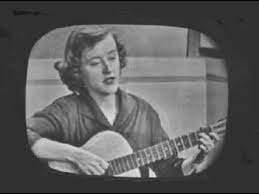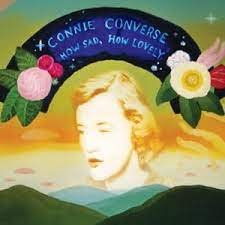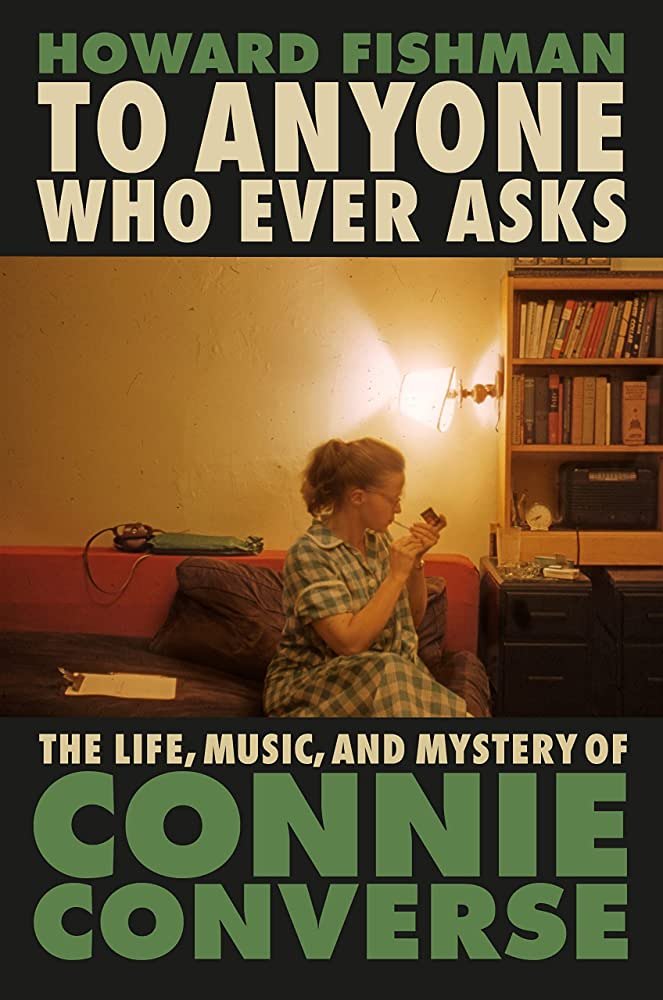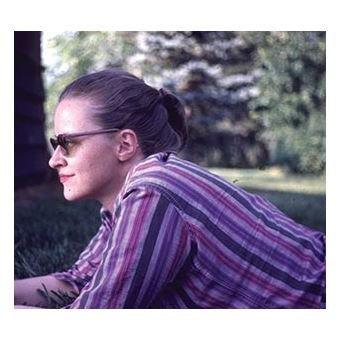‘To Anyone Who Ever Asks: The Life. Music, and Mystery of Connie Converse’
—Cathy Ritchie
To Anyone Who Ever Asks: The Life, Music, and Mystery of Connie Converse
by Howard Fishman (Dutton, 2023)
She was indeed a mystery, wrapped in an enigma.
On August 10, 1974. 50-year-old Elizabeth “Connie” Converse packed up her Volkswagen Beetle and left Ann Arbor, Michigan—destination unknown, perhaps even to her. The people to whom she sent farewell letters assumed she was headed back to New York City, her previous longtime residence, perhaps with the hope of reviving her close-to-nonexistent music career. Of course she’d be back. But they never saw her again, and neither did anyone else.
Her disappearance has remained unsolved ever since.
Even a few months ago, the name “Connie Converse” meant nothing to me. I learned of her via a passing reference in a music review. But she is a cult cause to numerous followers familiar with her songwriting, though she never released a commercial recording during her lifetime. Her story, and her influence on those who heard her songs via quick-and-dirty informal tapings, have remained an unsolved and compelling mystery for close to a half century.
Over a decade ago, songwriter/guitarist/playwright Howard Fishman, who’d been entranced by Converse’s songs for years, set out to unearth the full story and formulate a theory behind her disappearance. The result of his yeoman labors is To Anyone Who Ever Asks, a massive tribute to both Converse and her #1 fan.
This long but readable work is actually two books in one, artfully blended by Fishman into a coherent whole. It is a detailed biography of Converse, a gifted, creative woman likely born ahead of her time—plus a chronicle of her intriguing #1 fan’s wide-ranging search for the complete Converse backstory. Fishman’s journey led to copious interviews with friends and family members, and to a pile-up of notes and papers that filled rows of file cabinets over the years.
Converse was born in New Hampshire in 1924. She was a brilliant, multi-talented student, but left college after two years to tackle New York City. During the 1950s, she lived in digs from Greenwich Village to Harlem, working office jobs for her living while writing and performing songs for friends in casual settings, accompanying herself on guitar. Some of her pop-up performances were recorded by spectators, and she gradually became known in elite circles for her powerful lyrics on a broad spectrum of emotional topics.
In 1954 she made her only known public appearance, on CBS television’s Morning Show, hosted by a young Walter Cronkite. Despite her standing as a local cult figure of sorts, by the early 1960s, Converse was frustrated by her lack of musical progress and moved to Ann Arbor to join her younger brother Phil, ultimately a core information source for Fishman. She worked in secretarial/editorial jobs while still composing—art songs, ballads, even an opera. But her life in music seemed stunted. While other groundbreaking songwriters (she was often compared to Bob Dylan) were becoming famous, her efforts didn’t bring glory.
Fishman attempts to answer one lingering question about her: did Connie have romantic relationships of any kind, with either sex? He is fully convinced that she did conduct discreet affairs with men along the way, though his evidence largely consists of implications from her letters, and the suppositions of people who knew her personally—nothing definite emerges. Converse was extremely private, maintained a “well-guarded inner life,” despite romantic hints in her song lyrics.
By the early 1970s, Converse was burnt out, depressed, and relying heavily on daily smoking and drinking. After her 50th birthday in August 1974, she mailed her final letters, saying she just couldn’t “find my place to plug into society.” All assumed she would return to NYC, but once it became obvious that Converse was gone without a trace, her family decided not to involve authorities, concluding that it was her right as an adult to disappear if she chose.
Her music finally reached more mainstream ears, when an album of 17 songs, How Sad How Lovely, was released by Launderette Records in 2009. Today, Converse’s identity as a unique singer/songwriter is confirmed: YouTube and other sources offer audiences plentiful samples of her quirky vocal stylings, compelling music and lyrics, and a few mini-documentaries about her disappearance.
Fishman offers summary thoughts in conclusion: “How many more Connie Converses are there out there—marginalized talents waiting to be heard; artists and thinkers lacking the emotional tools, the encouragement, the self-esteem, the community, needed to thrive?....Don’t ask how Connie Converse disappeared. Ask how she lived. Listen to her recordings, hear her voice, play her songs. She’s still right there.”



